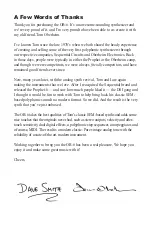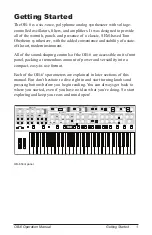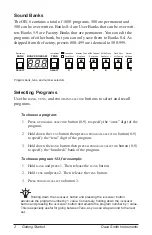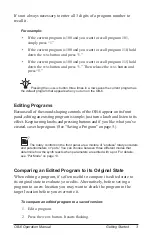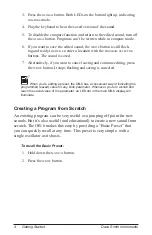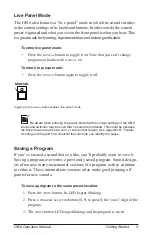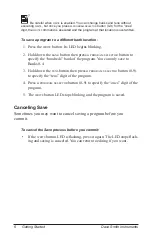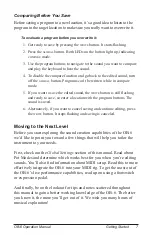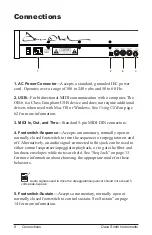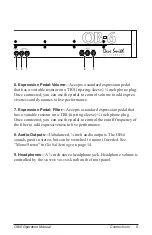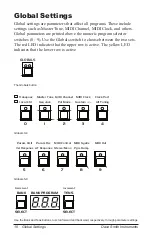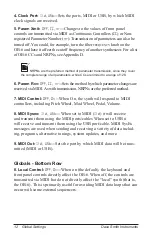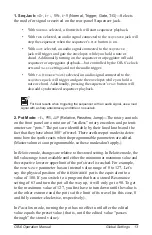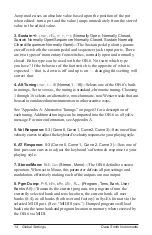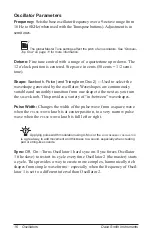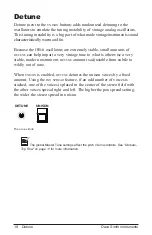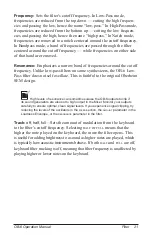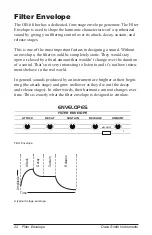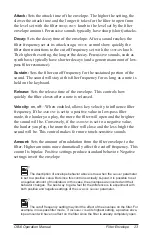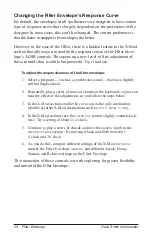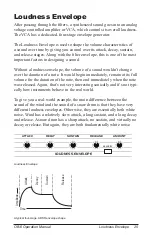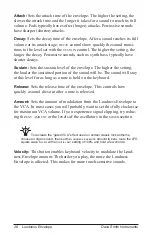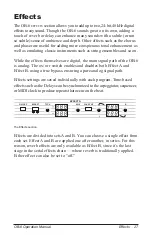
13
OB-6 Operation Manual
Global Settings
1 . Seq Jack:
NOR
,
Tri
,
Gat
,
T-g
(Normal, Trigger, Gate, T-G)—
Selects
the mode for signals received on the rear-panel Sequencer jack.
• With
normal
selected, a footswitch will start sequencer playback.
• With
trig
selected, an audio signal connected to the
sequencer
jack will
step the sequencer when the sequencer’s
play
button is on.
• With
gate
selected, an audio signal connected to the
sequencer
jack will trigger and gate the envelopes while you hold a note or
chord. Additionally, turning on the sequencer or arpeggiator will add
sequencer or arpeggiator playback—but controlled by the OB-6’s clock
bpm
and
value
settings and not the audio trigger.
• With
t
-
g
(
trigger
+
gate
)
selected, an audio signal connected to the
sequencer
jack will trigger and gate the envelopes while you hold a
note or chord. Additionally, pressing the sequencer’s
play
button will
also add synchronized sequencer playback.
For best results when triggering the sequencer with an audio signal, use a loud
signal with a sharp attack/decay and little or no sustain.
2 . Pot Mode:
Rel
,
Pas
,
Jup
(Relative, Passthru, Jump)—
The rotary controls
on the front panel are a mixture of “endless” rotary encoders and potenti-
ometers or “pots.” The pots are identifiable by their lined knobs and the
fact that they have about 300° of travel. There are three pot modes to deter-
mine how the synth reacts when the programmable parameters are edited.
(Master volume is not programmable, so these modes don’t apply.)
In
Relative
mode, changes are relative to the stored setting. In Relative mode, the
full value range is not available until either the minimum or maximum value and
the respective lower or upper limit of the pot’s travel is reached. For example,
the
resonance
parameter has an internal value range of 0 to 127. Let’s
say the physical position of the
resonance
pot is the equivalent to a
value of 100. If you switch to a program that has a stored Resonance
setting of 63 and turn the pot all the way up, it will only go to 90. To get
to the maximum value of 127, you first have to turn down until the value is
at the other extreme and the pot is at the limit of its travel (in this case, 0
and fully counter-clockwise, respectively).
In
Passthru
mode, turning the pot has no effect until after the edited
value equals the preset value (that is, until the edited value “passes
through” the stored value).
Summary of Contents for ob-6
Page 1: ...Operation Manual...
Page 2: ......
Page 10: ......
Page 94: ...84 Appendix C MIDI Implementation Dave Smith Instruments...
Page 95: ......

